- en
Your cat has diabetes. It's a lifelong condition, but it is manageable, and your cat can live comfortably.
This pet information prescription will help you know what to do, how to make your cat more comfortable, and how to help reverse the effects of diabetes (and in some cases, put your cat in remission!).
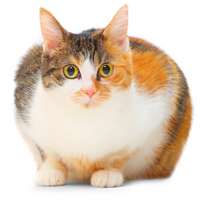
Type 2 diabetes can be a result of a cat being overweight. Most dry foods are filled with carbohydrates, and it's not that cats can't digest carbs, but they tend to do better on higher protein and even higher fat diets.
For most cats, the ideal macronutrient combination is about 50–60% protein, 30–40% fat, and less than 10% carbs. A diet with this type of ratio can help prevent and combat obesity in cats.
Our mission is to help save dogs' and cats’ lives through our educational content. To support our efforts, this page may contain affiliate links. We earn a commission for qualifying purchases – at no cost to you.
Diabetes mellitus occurs in cats when their body no longer produces or stops responding to a hormone called insulin. Insulin is needed to break down glucose (blood sugar). The result is glucose levels that are too high. This can cause serious illness for your cat.
Cats with diabetes are often hungrier, thirstier, and urinate more. And many lose weight despite their increased appetite. Some cats may also experience a lack of energy, vomiting, and even an odd stance in their back legs (known as a plantigrade stance due to nerve damage). Some of the first signs many cat owners see are their cat drinking more and filling the litter box with more urine.
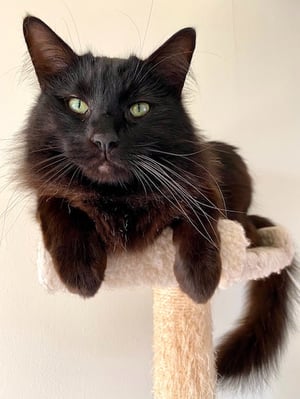 The cause of this disease depends on which type of diabetes your cat has. Just like in people, cats can have type 1 or type 2 diabetes, although most cats suffer from type 2.
The cause of this disease depends on which type of diabetes your cat has. Just like in people, cats can have type 1 or type 2 diabetes, although most cats suffer from type 2.
In type 1 diabetes, cats do not produce enough insulin.
In type 2 diabetes, cats don’t respond to insulin correctly, usually as a result of a poor diet or excessive weight.
The condition is most common in overweight, neutered male cats over 8 years of age. Cats that eat a high carbohydrate diet or are allowed to become overweight from overfeeding or excessive treats/table food are more prone. Additionally, Burmese cats seem to also be at a higher overall risk.
Follow your veterinarian’s instructions on administering medication (if prescribed) and, equally importantly, diet. Some cats will be prescribed injectable insulin, while others may be able to be maintained on an oral medication or prescription diet alone.
It can often take a few weeks, sometimes longer, to find the exact amount of insulin needed for your specific cat’s needs. You will need to closely monitor your cat’s appetite and how much they’re eating since you should only give insulin if your cat has eaten (to avoid driving their blood sugar too low). You’ll also need to keep a close eye on how much they’re drinking and going to the bathroom.
Your veterinarian may ask you to do some glucose level monitoring at home. Based on your cat’s specific condition, this can include using a special litter, placing special strips in the litter, or even using a glucometer at home to obtain a blood sample reading. Some veterinarians are able to place a temporary sensor for 7–10 days in your cat’s skin that can obtain a real-time glucose reading using a smartphone.
Most diabetic cats will need to return to the veterinarian for a follow-up blood test at least once after starting insulin or prescription diet therapy.
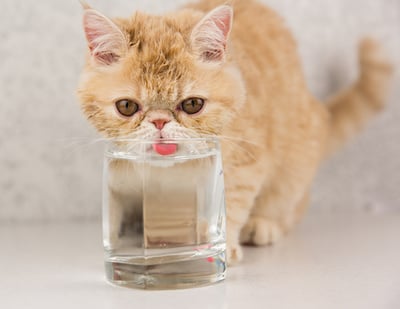
The best thing you can do is to use the medication and diet your veterinarian prescribed and keep a close eye on your cat’s eating, drinking, and litter box usage. Because they are more thirsty, make sure they have plenty of access to fresh, cold water at all times. Limiting their intake of water may cause severe dehydration in a diabetic cat.
You should also plan to scoop their litter box at least daily and consider adding another box to make sure that they always have a clean, dry place to go. Cats can be finicky and like a clean place to go, so since they're likely to be going more often, a second litter box is a really good idea – and not just when they're sick. They always like having litter box choices.
You should notice a decrease in your cat’s hunger, thirst, and urination amount. You may notice your cat is more active and feeling more like themselves as well.
If your cat was overweight, they may start to lose weight. It's important to weigh your cat regularly to make sure they're not losing too fast, and you and your veterinarian can be sure they're getting the right dosage of insulin based on their weight.
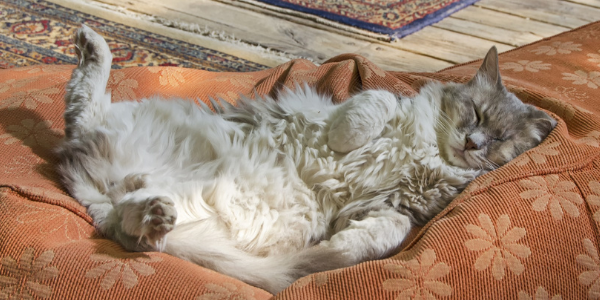
At any point, if your cat acts weak, with no energy, or wobbly (almost as if they are drunk), rub some Karo or corn syrup on their gums and get them to a veterinarian right away. This is a sign that their blood sugar has gone too low. If you have a diabetic pet, it's a good idea to have Karo or corn syrup in your cupboard, just in case.
If your cat is acting normal but is overly hungry, drinking and/or urinating too much after 2 weeks, let your veterinarian know – as they may need to adjust your cat’s insulin dosage or overall therapy.

In some cases, diabetes can be “reversed,” meaning your cat will no longer require insulin. For these kitties, it is important to keep them on a veterinarian-recommended nutrition plan or prescription diet and at a lean, healthy weight.
Your veterinarian can best advise you on protein and carbohydrate levels to stick to if your cat can return to a non-prescription food, and for those who require the prescription food, a specific amount to feed them.
The Pet InfoRx® is made possible, in part, through our partnership with AlignCare®.
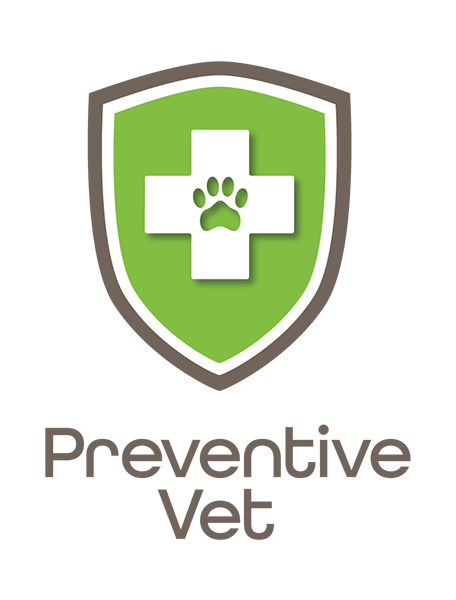

© Preventive Vet. All rights reserved. PreventiveVet.com
